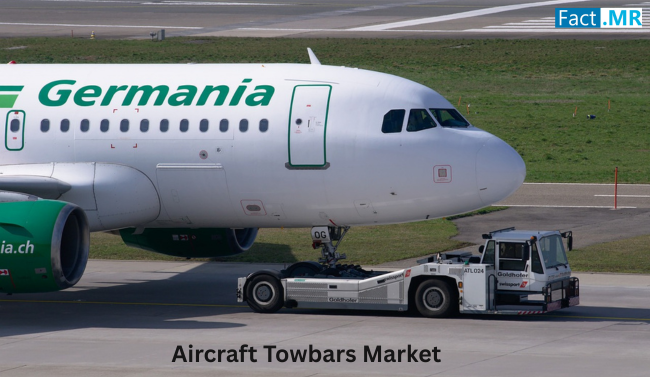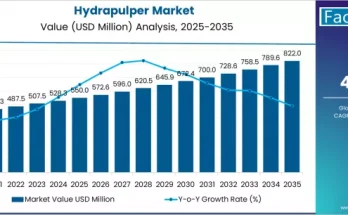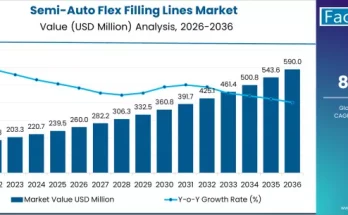Aircraft towbars serve a vital role in aviation’s ground support ecosystem. Designed to connect an aircraft’s nose or main landing gear to a tow tug, these tools enable safe, precise movement on ramps, gates, and hangars—minimizing structural stress and maximizing operational efficiency. From universal and multi-head towbars in various materials like aluminum and steel, these devices are engineered to handle aircraft ranging from small business jets to large wide-body airliners.
Market Snapshot & Growth Forecast
Fact.MR projects the global aircraft towbar market to grow from approximately USD 8.9 million in 2024 to USD 14.8 million by 2035, registering a solid 4.9% CAGR. This represents a nearly 1.6× increase in market size with an absolute opportunity of USD 5.64 million—signaling robust market potential.
Key Market Drivers
- Rising Air Traffic & Ground Support Needs
With global passenger volumes rebounding, airlines and airports are investing in high-quality ground support equipment (GSE)—including towbars—to maintain quick turnaround times and operational reliability.
- Infrastructure Expansion
New airport construction and terminal upgrades—especially in emerging economies—spur demand for standardized and versatile towing solutions .
- Material & Design Innovation
Lightweight materials like aluminum and carbon fiber are increasingly used to reduce weight and wear-and-tear. Adjustable towbar heads and comfort handles enable compatibility with multiple aircraft types.
- Regulation & Safety Mandates
FAA and EASA are enforcing stringent safety standards for towing operations, pushing operators toward certified towbars—prompting higher adoption of premium equipment.
- Electrification & Automation Trends
The rise of electric and hybrid tugs is influencing towbar design, accelerating the shift toward electric mechanisms and automated, ecologically friendly towing systems .
Product Types & Material Trends
- Towbar Type: Multi-head towbars, which can adapt to different aircraft configurations, remain the most popular. However, standard/universal towbars are gaining ground due to their versatility.
- Materials:
- Aluminum is valued for its lightweight and resistance to wear, ideal for commercial and regional jets.
- Steel offers durability and strength, often preferred for heavier aircraft.
- Carbon fiber variants are emerging, offering optimized strength-to-weight ratios.
Regional Insights
North America
A mature and high-utilization market, North America leads due to its large aviation industry, frequent GSE upgrades, and substantial airline fleets. U.S. airports focus on standardized, reliable towbar systems delivered by domestic and international suppliers.
Europe & Asia-Pacific
Following North America closely, Europe benefits from aviation infrastructure developments. Meanwhile, Asia-Pacific demonstrates high growth potential, driven by booming air travel and new airport investments.
Industry Players & Competitive Landscape
Major towbar manufacturers include Tronair, Aero Specialties, Brackett Aircraft, AGSE Corp., K&M Airporttechnik, and Dedienne Aerospace. These companies focus on lightweight, adjustable, and electric towbar designs to stay competitive.
Operators are also preparing for the transition to towbarless tugs, which promise operational and safety efficiencies, although traditional towbars remain essential in most current ground handling setups.
Innovation & Safety Trends
Electric Towbars & Remote Integration
Electric towbar variants are seeing nearly 2× faster growth than conventional models. Battery improvements (e.g., from lead-acid to lithium-ion) have enhanced safety and portability. Smart systems are now embedding real-time data exchange for proactive maintenance and streamlined GSE workflows.
Safety Management Systems
Following IATA’s report suggesting over USD 4 billion in safety savings, advanced towbar designs now integrate features like shear pins, magnetic couplings, and backflow prevention—meeting stringent airport and regulator standards.
Towbarless Tug Competition
Although electric towbars are gaining uptake, the industry is also adopting towbarless tugs that directly couple with aircraft, reducing GSE handling needs. However, evolving regulations and infrastructure shifts mean towbars will coexist for the foreseeable future .
What Lies Ahead
- Electric & Automated Towing: Expect continued growth in electric and AI-capable towbar models, integrated with predictive maintenance platforms.
- Material Innovation: Carbon-fiber towbars may penetrate high-value segments, especially where weight savings benefit efficiency.
- Safety & Regulation: FAA, EASA, and global bodies will align on smarter GSE monitoring, encouraging certified smart towbars.
- Towbarless Coexistence: While uptake increases, regulations and cost-sensitive airports will preserve demand for high-quality towbars.
- Asia-Pacific Expansion: Infrastructure growth will shift market momentum eastward.
Final Thoughts
The aircraft towbar market is trending upward, supported by a global CAGR of 4.9% and anticipated USD 14.8 million valuation by 2035. Ground support innovation—from electric towbars to AI-enabled systems—will continue to guide the market’s evolution. As airports modernize and safety regulations tighten, key manufacturers who balance quality, automation, and compliance will define the next decade of towbar innovation.



